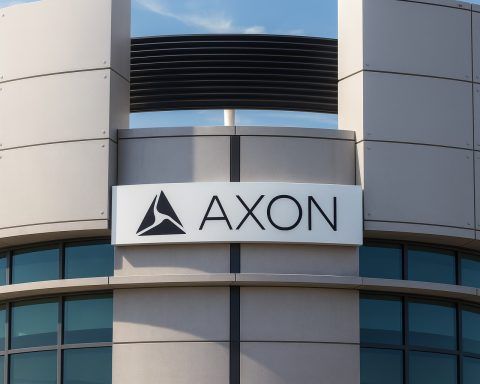- Steep Drop: Gartner, Inc. (NYSE: IT) shares have fallen nearly 50% in the past year, from around $513 to $258 [1], vastly underperforming the S&P 500’s ~14% gain [2]. As of November 4, 2025, the stock trades near $233 (down ~5% on the day) [3], hovering just above its 52-week low of $223 [4].
- Latest Earnings Beat: Q3 2025 adjusted earnings per share (EPS) came in at $2.76, handily beating Wall Street’s ~$2.43 forecast [5]. Revenue of $1.52 billion was roughly in line with expectations (up ~2.7% year-over-year) [6] [7], though the core Research (Insights) segment grew 5.1% [8] while smaller Consulting and Conferences units saw declines [9].
- Guidance Raised: On Nov 4, Gartner raised its full-year 2025 outlook, now projecting $6.48 billion revenue (vs. $6.46B prior) and $12.65 adjusted EPS (up from $11.75) [10] [11]. This modest boost reflects steady demand for Gartner’s IT research services as companies plan tech upgrades and AI adoption [12]. Notably, Gartner’s Q3 results prompted an upward revision despite a slight revenue miss, thanks to strong profitability [13].
- Big Buybacks & New AI Tool: The company executed a record $1 billion stock repurchase in Q3 – the largest ever in a single quarter [14] – signaling confidence in its valuation. It also launched “AskGartner,” a new AI-powered research assistant, to enhance client engagement and capitalize on the AI trend [15].
- Market Position: Gartner is the world’s leading IT research and advisory firm, with most of its ~$6.3B annual revenue coming from subscription-based research insights (~$5.1B in 2024) [16]. It operates a high-margin, recurring revenue model (multi-year contracts, ~85% client renewal rates [17]) that provides stable cash flow. Its scale dwarfs competitors – for example, Forrester Research only had ~$0.43B revenue in 2024 and a ~$150M market cap [18] [19], versus Gartner’s $6B+ and ~$18B, underscoring Gartner’s dominant market share.
- Analyst Sentiment: Despite the stock’s drop, Wall Street remains cautiously optimistic. The average analyst price target is around $290–$300 per share [20] (about 20% above current levels), and recent ratings skews to Hold [21] with some Buy calls (one latest target is $286 [22]). Over 90% of Gartner’s stock is held by institutions [23], and short interest is moderate (~8% of float) [24], reflecting a mix of long-term confidence and near-term skepticism.
Stock Price & Recent Performance (2025)
Gartner’s stock has experienced a roller-coaster 2025. After touching all-time highs, the share price cratered ~50% from its peak over the past year [25]. Key factors behind this plunge include investor fears over slowing growth in Gartner’s contract value (CV) – a metric of future subscription revenue – and softening IT spending forecasts amid economic uncertainty [26]. A broader sell-off in high-growth tech stocks also weighed on Gartner’s valuation [27].
As of November 4, 2025, Gartner trades around $233 per share, down about 5% from the prior close [28]. Notably, the stock initially jumped in pre-market trading after the Q3 earnings beat and guidance raise (up ~3–4% early) [29] [30], reaching the high-$240s. However, those gains reversed as the trading session progressed – by midday Nov 4, shares turned negative, suggesting traders may have “sold the news” or reacted to broader market weakness (major indices were sliding that day [31]). The 52-week range highlights Gartner’s volatility: from a low of ~$223 to a high of ~$583 [32]. At current prices, Gartner is near multi-year valuation lows – about 15× earnings and 3× sales, which are near its 5- to 10-year low multiples [33]. This drastic reset sets the stage for a potential rebound if the company can reaccelerate growth, but also signals lingering caution.
Latest News: Q3 2025 Earnings & Raised Outlook
Gartner’s Q3 2025 earnings (reported Nov 4) delivered a mixed yet generally positive message. Earnings far exceeded expectations – adjusted EPS of $2.76 beat consensus by ~14% [34], reflecting effective cost controls and share buybacks. Revenue totaled $1.524 billion, up 2.7% year-over-year [35] and essentially in line with estimates (analysts expected ~$1.52B) [36]. While top-line growth was modest, it’s important to note Gartner had flagged a slowdown earlier in the year (back in August, management cut its revenue outlook citing slower demand in its core research segment amid an uncertain economy [37]). Against that cautious backdrop, meeting revenue expectations in Q3 was a relief.
Crucially, Gartner raised its full-year forecast on the strength of Q3. The company now projects 2025 adjusted EPS of $12.65 (up from $11.75) and revenue of ~$6.48B (slightly above the prior $6.46B) [38] [39]. This new guidance is also ahead of the average analyst estimate (~$12.21 EPS) [40], signaling management’s confidence. According to Reuters, “steady demand” for Gartner’s IT research and advisory services – as companies evaluate tech upgrades and AI adoption – drove the improved outlook [41].
Shareholder returns were another highlight. Gartner repurchased over $1 billion of its stock in Q3, which CEO Gene Hall called an “extraordinary value and a unique opportunity” – the largest buyback in any quarter of the company’s history [42]. This aggressive buyback likely contributed to the EPS beat and underscores management’s bullish view that the stock is undervalued. Indeed, pre-market trading saw Gartner shares pop nearly 3–4% on the earnings news [43].
On the segment level, Gartner’s Insights (Research) division – which is the bread-and-butter subscription business – grew revenue ~5.1% year-over-year in Q3 [44]. In contrast, its Conferences and Consulting revenues were down, reflecting lingering weakness in in-person events and discretionary consulting projects [45]. Even so, total contract value (CV), a forward-looking indicator of subscription sales, rose about 3% (or 6% excluding the U.S. federal government segment) [46] to reach $5.0B [47] – a solid sign of continued demand. Gartner even boosted its 2025 guidance for adjusted EBITDA and margins, indicating improved profitability outlook [48].
One negative in the quarter was on a GAAP basis: net income was only $35 million (down sharply from $415M a year ago), due largely to a $150M goodwill impairment charge on the Gartner Digital Markets unit [49]. Excluding such one-offs, Gartner’s underlying performance remains strong – adjusted net income was ~$207M [50]. The goodwill write-down and some restructuring (Gartner removed its small Digital Markets operations from the main segments [51]) suggest the company is clearing decks and refocusing on core businesses.
AskGartner Launch: A notable new initiative announced alongside Q3 results was AskGartner – an AI-driven digital assistant that allows clients to query Gartner’s vast research database in natural language [52]. The tool is meant to enhance the value of Gartner’s services by leveraging generative AI for faster, customized insights. Management expects AskGartner to drive greater client engagement and upsell opportunities over time [53]. This launch shows Gartner aligning with the AI trend, both as a subject of its research and by integrating AI into its own offerings.
In sum, the recent news flow around Gartner has been largely positive: an earnings beat, higher guidance, a major buyback, and an AI product launch. These developments counter some of the gloom that had hung over the stock earlier in 2025. “Third quarter financial results were ahead of expectations,” CEO Gene Hall noted, highlighting the CV growth and improved outlook. “We…continue to expect CV to accelerate in 2026. Seeing extraordinary value…we repurchased more than $1 billion of stock, a Gartner record for a single quarter” [54]. That upbeat tone set by management has given investors some reassurance heading into year-end.
Analyst & Expert Commentary
Market experts have mixed views on Gartner’s prospects, balancing its recent stumbles with its long-term strengths. Wall Street analysts overall remain cautious but not bearish. According to Finimize, most analysts rate Gartner a “Hold” right now [55], reflecting uncertainty about near-term growth. However, the consensus price target is still around $298 per share [56] (per GuruFocus data) – roughly 20% above the current trading price. This suggests analysts see upside if Gartner executes well, even if few are pounding the table with outright Buy calls. In fact, the range of targets is wide (one recent analyst set a $286 target and Buy rating [57], while others are more conservative), indicating some disagreement on how quickly Gartner can re-ignite growth.
Notably, professional investors haven’t given up on Gartner – a whopping ~97% of the float is held by institutions like mutual funds and hedge funds [58]. This high institutional ownership signals that many seasoned investors still have confidence in Gartner’s business model and are in it for the long haul. At the same time, short interest is around 8% of the float [59], implying a minority of investors are betting on further declines (perhaps anticipating continued headwinds or a miss in execution). This split sentiment mirrors Gartner’s situation: fundamentally solid and profitable, yet facing questions about growth trajectory.
Several financial commentators have weighed in on Gartner’s dramatic stock slide. For instance, a Finimize analysis framed 2025 as a “reset” year for Gartner, noting that the near-50% share price drop came as “growth concerns, competition from AI, and softer IT budgets” weighed on sentiment [60] [61]. The report highlighted that investors were spooked by slowing contract value gains and the fear that emerging AI tools could eat into Gartner’s franchise [62] [63]. Yet, Finimize also underscored Gartner’s resilient business model and suggested the sell-off might present a long-term opportunity for patient investors. They point out Gartner’s “fortress-like” competitive moat – built on proprietary data, a trusted brand, and high client switching costs – and its impressive profitability (return on invested capital around 58% and operating margins ~23%, far above industry averages) [64]. These strengths bolster the bull case that Gartner can navigate the current slump.
From the executive suite, Gartner’s CEO and management have struck an optimistic tone about the future, especially regarding the role of AI. “AI will be one of the most innovative and pervasive technologies in history,” CEO Gene Hall remarked on the Q3 call [65]. He emphasized Gartner’s unique position to guide corporate clients through the complexities of AI adoption [66]. This commentary aligns with Gartner’s strategy to remain indispensable to IT leaders by covering emerging tech trends (like generative AI) in its research and by incorporating AI into its own services (e.g. AskGartner). Analysts generally view this strategic focus on AI as a positive – TipRanks’ AI-based “Spark” analyst notes that Gartner’s “strong financial performance and strategic focus on AI are significant strengths”, supporting its growth prospects [67]. The Spark analysis did caution, however, that Gartner faces risks from “high leverage and challenges in government contracts and tariff-affected industries” [68] (Gartner does have some exposure to federal IT spending and sectors impacted by trade issues) – though Gartner’s balance sheet leverage is still fairly modest by most measures.
Another theme in expert commentary is cost discipline. Gartner has repeatedly demonstrated tight expense management, which has helped preserve its margins even as revenue growth slowed. Reuters noted that “Gartner’s tight control of costs have supported profits and shareholder returns”, bolstering its market standing [69]. This discipline was evident in Q3’s earnings beat and the massive share buyback. Some analysts see further margin expansion potential if Gartner continues to digitize services and trim costs – a bull-case point highlighted by Finimize (they cited focusing on higher-margin digital offerings and ongoing cost control as a way Gartner could nudge profitability even higher) [70].
In summary, analysts and experts acknowledge Gartner’s near-term challenges – particularly the slow growth and new competitive threats – but on balance, they recognize its enduring strengths. The consensus seems to be that Gartner is not a broken company, but rather a solid franchise going through a rough patch. As Zacks Equity Research put it in a recent note, Gartner managed to “lift 2025 guidance for EPS and EBITDA despite a steep YTD stock decline” [71], implying that the business momentum is better than the stock’s performance suggests. Many are watching for catalysts like an uptick in contract value growth or traction from new products (AskGartner) to turn sentiment more decisively positive.
Business Overview: Market Role & Revenue Drivers
What does Gartner do? In a nutshell, Gartner is the go-to advisor for corporate technology leaders. The company provides independent research, analysis, and consulting to help executives make informed decisions about IT investments and strategy. Gartner’s influence is widespread – its research reports and expert analysts inform purchasing and planning at thousands of large enterprises and government agencies worldwide. Reuters describes Gartner’s research as “a critical piece in technology planning and vendor evaluation” for companies across industries [72]. Essentially, when a CIO or CTO is evaluating, say, a major software implementation or emerging tech like AI, Gartner’s insights often guide those choices.
Gartner’s business model is highly subscription-driven. Around 80%+ of revenue comes from the Research segment (also referred to as “Insights”), which sells annual memberships to access Gartner’s research and advisory services [73] [74]. Clients (typically large organizations) pay hefty fees for ongoing access to Gartner’s analysts, reports, benchmarks, and inquiries. These contracts usually last 1-3 years and have high renewal rates – historically over 85% of clients renew [75] thanks to Gartner’s entrenched value in their planning processes. This creates a recurring revenue stream with excellent visibility. In 2024, for example, Gartner’s total revenue was about $6.27 billion, of which $5.13 billion came from its subscription-based research and insights services [76]. This subscription model provides stability and predictability (even “in a bad year, a top-tier business like Gartner can shine for a few quarters,” as StockStory noted [77]).
The remainder of Gartner’s revenue comes from two segments: Consulting and Conferences. Consulting (roughly 10% of revenue) offers bespoke advice and strategic consulting projects for IT and business leaders, leveraging Gartner’s research and data. Conferences/Events (roughly 10% of revenue pre-pandemic) includes hosting marquee events like the Gartner Symposium/ITxpo, which attract thousands of attendees and sponsors. In 2024, consulting brought in about $558 million and conferences about $583 million [78]. These segments are more cyclical – events took a hit during COVID-19 and have been recovering slowly, and consulting demand ebbs and flows with corporate spending. Gartner’s Q3 2025 results reflected this: while research subscription revenues grew mid-single digits, consulting and event revenues were down year-over-year [79] as clients tightened discretionary spending. Long-term, Gartner’s research segment remains the growth engine and profit center, with consulting and events serving as complementary offerings that also feed the research franchise (events often help win new research clients, consulting projects upsell research content, etc.).
Gartner’s strategic position in the market is very strong. It’s by far the largest player in IT research/advisory services – much bigger than nearest competitor Forrester Research, which has under $0.5B annual revenue [80]. This scale gives Gartner an extensive analyst team (~2,500 experts globally [81]) and a deep well of proprietary data. The company has built a “goldmine of proprietary data” and a trusted brand, as Finimize observed [82]. Its research reports (like the famous “Magic Quadrant” vendor rankings) and forecasts are considered industry standards. Importantly, Gartner benefits from a network effect and high switching costs – CIOs rely on Gartner because their peers and vendors also follow Gartner’s assessments. Replacing Gartner is not easy; doing so might risk missing key insights or industry connections. This confers an economic moat that has allowed Gartner to consistently command premium pricing and healthy margins.
At the same time, Gartner’s management is not resting on its laurels. The company continually updates its coverage to address new tech domains (cybersecurity, cloud, AI, etc.) and expands geographically. Gartner has also been investing in new product features like the AskGartner AI platform to enhance service delivery. Furthermore, Gartner’s tight-knit relationship with IT buyers and vendors positions it at the center of the tech ecosystem. For instance, Gartner’s forecasts (say, for global IT spending or enterprise software growth) are closely watched barometers in the industry – one recent Gartner forecast expects enterprise software spending to reach $2 trillion by 2029, with about $76 billion of that on generative AI [83]. This illustrates Gartner’s thought leadership role in quantifying trends like AI adoption.
Overall, Gartner’s revenue drivers are: (1) Growth in contract value (CV) – signing new clients and expanding wallet share with existing clients for research subscriptions; (2) Retention rates – keeping that renewal percentage high; (3) New product offerings that justify upselling and price increases (e.g. specialized research in emerging fields, AI tools); and (4) Macro IT spending trends – when corporate IT budgets grow, Gartner usually benefits as firms invest in more guidance, whereas in tight budget years new sales can slow. Despite recent headwinds, Gartner’s multi-year subscription model provides resilience. Even in 2023–2024 when tech budgets were squeezed, Gartner managed to grow revenue in the mid-single digits [84], a testament to its value proposition.
Financial Performance & Trends
From a financial perspective, Gartner has been a cash-generating machine with robust growth until recently. Over the five years pre-2025, Gartner compounded revenue at ~9% annually and EPS at ~27% annually [85] (boosted by share buybacks). Its operating margins have historically been in the high teens (averaging ~18–19% over the last 5 years) [86] – exceptionally high for a business services firm – and free cash flow generation is strong (often exceeding net income). Gartner used this cash both to reinvest (through acquisitions earlier and product development) and to return capital (through buybacks – the share count is ~16% lower than 5 years ago due to repurchases [87]).
However, heading into 2025, growth decelerated significantly. The chart below illustrates Gartner’s year-over-year revenue growth rate by quarter, which peaked above 15–20% in the post-pandemic tech boom but slowed to ~3% in the latest quarter:
Year-over-Year Revenue Growth: Gartner’s revenue growth has tapered off from double-digits in 2021–22 to the low single digits in 2023–25, reflecting a tougher environment for IT spending. In Q3 2025, revenue was up just ~2.7% YoY [88]. The slowdown is attributed to cautious client spending and tougher comparisons, but Gartner still managed to keep growth positive when many tech firms saw declines. This resilience comes from its subscription model locking in revenue, although investors are eager to see growth reaccelerate from these low levels.
A key factor in the recent slowdown has been the contraction in Gartner’s operating margin. In Q3 2025, GAAP operating margin was just ~5.7% [89] (down from ~16.6% a year earlier [90]), due in part to that one-time impairment charge and higher costs. Even on an adjusted basis, margins have slipped as revenue growth lagged expense growth. Over the long term, Gartner’s margin trend has raised some questions: despite strong revenue expansion historically, its operating margin actually declined by about 4 percentage points over the last five years [91]. Normally one would expect some economies of scale, but Gartner has invested heavily in expanding its sales force and capabilities (and had the temporary hit from pandemic disruptions to conferences). The company is now focusing on improving margins again – evidenced by the raised margin guidance for 2025 [92] and initiatives to shift more services online (which can be delivered at lower cost).
One highlight of Gartner’s financials is its cash flow and balance sheet strength. Gartner consistently converts a large portion of earnings to free cash flow (FCF). In Q3, free cash flow was $269M [93] (vs. net income of $207M adjusted), indicating high cash conversion. The balance sheet shows a sizable debt load in absolute terms (total debt was a few billion dollars), but Gartner’s leverage ratios are reasonable given its cash generation. According to Finimize, net debt/EBITDA is only ~0.16× [94] – extremely low – thanks to a large cash buffer from earlier operations. (Note: the debt-to-equity ratio appears high at ~1.8 [95], but that’s partly due to low book equity after share buybacks and goodwill write-downs; interest coverage is nearly 10×, so there’s no issue servicing debt [96].) In short, debt is a non-issue for now [97], and Gartner’s strong credit metrics afford it flexibility to continue buybacks or strategic acquisitions. Indeed, the company had $700M of additional buybacks authorized going into Q4 [98], on top of the $1B executed in Q3.
From a valuation standpoint, Gartner’s stock looks relatively cheap after its decline. It currently trades around 15× trailing earnings (P/E) and ~3× sales, near the lowest multiples it has seen in a decade [99]. For context, during the 2020–2021 bull run, Gartner traded above 30× earnings at times. Now its P/E is close to its 10-year low [100]. Its forward P/E (based on the new guidance ~$12.65 EPS) is ~18×, which is below the S&P 500 average and well below many tech peers. Meanwhile, Gartner’s EV/Revenue (~4.9×) and EV/EBITDA are slightly above market averages [101], indicating the market still accords a premium for its subscription model and high margins. Some analysts see this valuation disconnect as an opportunity – Gartner’s earnings yield (~6-7%) and FCF yield are attractive given its stable business, if growth can resume. GuruFocus notes the stock’s price-to-sales and price-to-book ratios are near 5-year lows as well [102]. On the other hand, a few bears argue the stock isn’t a screaming bargain relative to slower growth prospects (Finimize points out Gartner’s forward P/E is only slightly below the market’s, suggesting investors are somewhat skeptical of its growth streak continuing [103]).
Strategic Outlook and Competitive Landscape
Looking ahead, the big question is whether Gartner can reignite growth in the coming years or if it remains stuck in a low-growth mode. Management is adamant that the slowdown is temporary. They have expressed confidence that contract value (CV) growth will reaccelerate in 2026, targeting a return to high-single-digit CV growth, and even double-digit growth by 2027 [104]. Essentially, Gartner expects that as macro IT spending improves and its new initiatives take hold, it can get back to a healthier growth clip. Achieving that will likely hinge on a few factors:
- Macro IT Spending Cycle: Gartner’s fortunes are tightly linked to enterprise IT budgets. If the economy strengthens or at least stabilizes, companies may loosen purse strings on IT initiatives (cloud upgrades, digital transformation, AI projects, etc.), which in turn boosts demand for Gartner’s advice. Conversely, if a recession hits or CFOs stay cautious, Gartner’s growth could remain anemic. This cyclical risk is well-understood – as Breakingviews notes, “Gartner’s fortunes are closely tied to corporate IT budgets”, and a stumble in the economy could cause clients to scale back research spending [105]. The current consensus is that 2024 may see only modest IT spending growth, but potentially a pickup later in 2025–2026 alongside any economic recovery.
- Competitive Pressure from AI and Alternatives: A new competitive threat has emerged in the form of AI-driven analytics and increased availability of free information. Some observers wonder if tools like OpenAI’s ChatGPT (or tech giants’ AI offerings) could start to replicate a slice of Gartner’s value by synthesizing tech knowledge at lower cost. Finimize flags “new AI-powered rivals and do-it-yourself analytics from big tech” as potential disruptors to Gartner’s research model and pricing power [106]. Gartner’s response has been twofold: incorporate AI into its products (hence AskGartner) and leverage its human insight + proprietary data to offer depth that generic AI cannot. In the near term, Gartner’s entrenched position and credibility should keep enterprises reliant on its guidance – it’s a trusted intermediary in a way a generic AI tool isn’t (and Gartner often produces the data that AI tools might use). But over the long term, this is a space to watch. Gartner might face pricing pressure if clients perceive less need for expensive subscriptions when some info is commoditized. Big tech firms (e.g. Microsoft, Google) also pose indirect competition if they bundle more advisory content with their cloud services. So far, Gartner has maintained a unique niche, but staying ahead means continuing to deliver insights that are a few steps beyond what an algorithm or a crowdsourced review can provide.
- Execution of AskGartner and New Services: The AskGartner AI platform is a key part of the company’s strategy to ensure it embraces AI disruption rather than gets steamrolled by it. If AskGartner is successful, it could make Gartner’s offerings even more indispensable by allowing clients to get instant, tailored answers from Gartner’s knowledge base. TipRanks notes this tool “could fuel greater client engagement, higher upselling, and more consulting business” if it resonates with users [107]. It might also attract new types of customers (perhaps mid-sized firms) who want a more on-demand, interactive experience. Gartner is also pushing into fast-growing regions (expanding in markets like Asia-Pacific) and continuously refining its events to draw crowds. The success of these growth initiatives will heavily influence Gartner’s medium-term outlook. Early reception to AskGartner and any updates on its usage may be something investors listen for in upcoming quarters.
- Continued Financial Discipline: Gartner has signaled it will continue robust share repurchases and maintain margin discipline. The board authorized an additional $700M for buybacks recently [108], indicating buybacks will persist in 2026. These repurchases should provide a tailwind to EPS growth and show confidence. Moreover, if revenue growth does stay low for a while, Gartner could still drive EPS higher through cost management and reducing share count. In a sense, Gartner’s downside is buffered by its ability to generate cash and self-help on margins. GuruFocus’s automated analysis gave Gartner high scores in financial strength (Altman Z-score 4.16) and profitability (Piotroski F-score 9) [109], reinforcing that this is a fundamentally solid enterprise. The company’s beta of ~1.35 means the stock is a bit more volatile than the market [110], but not outrageously so for a tech-related name.
In terms of traditional competitors, as mentioned, Gartner’s scale is far ahead. Forrester Research (NASDAQ: FORR) is one notable competitor in the research space, but its revenues (~$400M) are a tiny fraction of Gartner’s [111]. In fact, Forrester’s own stock has been hammered (down ~53% year-over-year in market cap [112]) as it struggled with similar issues of slowing demand. Other boutique firms and consultancies compete in slices of Gartner’s market, but none offer the breadth of research coverage. The main competitive challenge comes not from these small rivals but from the changing landscape of information consumption in the tech industry (i.e., the “Google effect” or AI information services). Still, Gartner’s brand and depth provide it a strong defensive moat. As long as CIOs need an objective voice to navigate complex tech decisions, Gartner should maintain a pivotal role.
Bottom Line – Outlook: Gartner’s short-term outlook (next 1–2 years) is for modest growth at best, with 2025 likely seeing only low-single-digit revenue gains and flat-to-down EPS versus 2024 (due to tough comparisons and the transition in some offerings). In fact, sell-side analysts before the Q3 report were projecting full-year 2025 EPS to shrink by ~14% [113] compared to the prior year, reflecting those headwinds. Gartner’s updated guidance, however, suggests 2025 EPS will be roughly stable (around mid-$12, similar to 2024’s level) – a better outcome than feared [114]. For 2026 and beyond, if Gartner’s predictions hold, we could see a return to mid to high-single-digit growth, especially if economic conditions improve. The ramp-up of AI-related spending by enterprises (an area Gartner will both track and benefit from) could provide a new growth driver. Additionally, any recovery in the conferences business (as business travel normalizes) would add a boost since that segment has lagged since the pandemic.
Investors will be watching a few key indicators in upcoming quarters: contract value (CV) growth (to confirm an inflection in client spending commitments), research segment growth rate (should tick up if demand improves), AskGartner adoption metrics, and operating margin progression. Gartner’s own optimism about 2026 CV acceleration will need to be validated by these metrics in 2025.
Stock Forecast & Investment Takeaways
Given the above, what is the stock’s potential trajectory? If Gartner executes well and macro conditions don’t deteriorate, the stock has room for recovery. Many analysts believe that at ~15× earnings, the risk/reward has become favorable for a high-quality franchise. The consensus target near $300 implies expectation of a bounce as earnings stabilize and perhaps growth reignites [115]. In a bullish scenario where Gartner regains, say, 7-10% annual EPS growth and maintains its moat, a return toward its previous highs (>$300, even $350) over the next couple of years is conceivable, especially if the market rewards its recurring revenue profile with a higher multiple again. Some optimists even note that the average price target of ~$300+ is still barely half of Gartner’s peak share price, meaning there’s substantial upside if the company were to recapture prior valuation levels.
However, a bearish scenario must also be considered. If IT spending stays sluggish into 2025–26 or competition starts chipping away at Gartner’s client base, the stock could languish or fall further. Gartner itself warned that if contract value growth stalls, it sets the stage for revenue misses and more pain for the stock. Bears argue that Gartner’s growth story might be maturing, and that the days of double-digit growth are over – if so, a lower valuation might be the new normal. Additionally, with the stock’s elevated volatility (it has swung more than the market on macro news), any market pullback could hit Gartner disproportionately hard.
On balance, the long-term outlook for Gartner remains positive but with a cautious near-term stance. The company’s fundamentals – recurring revenue, high margins, strong cash flow – are the kind that typically reward patient investors. Indeed, some experts see the current slump as a chance to accumulate shares at a reasonable price, betting on a turnaround. As Finimize concluded, Gartner “combines a top-tier research platform, impressive returns on capital, and dependable cash generation – making it a standout in IT services”, but “near-term worries about slowing contract growth [and] stronger competition from AI-native upstarts…mean investors should go in with eyes open.” In other words, Gartner is a solid company navigating a transitory rough patch.
Comparison to Peers: In tech research and advisory, Gartner essentially is the 800-pound gorilla, so direct peer comparison is limited. But if we compare to broader information services firms or consultancies, Gartner’s growth slowdown is not unique – many companies serving corporate tech needs saw a dip in 2023–2025. The important differentiator is that Gartner still maintained profitability and did not suffer revenue declines, whereas some peers did. Its closest analogs might be companies like Accenture or IBM’s consulting arm in terms of being advisors on tech, though those are much more services-heavy. Gartner’s asset-light, subscription-heavy model actually held up better in the downturn than many pure consulting businesses. So if IT spending trends improve, Gartner could rebound faster due to the leverage in its model.
Investor strategy: For current and prospective investors, key takeaways would be: Gartner has a dominant market position and robust finances, making it a potentially attractive long-term holding especially after a 50% drop. The stock offers exposure to broad tech spending trends (including hot areas like AI) but in a somewhat more defensive, picks-and-shovels way (since Gartner profits by advising on tech rather than selling a specific tech product). The short-term outlook is mixed, so volatility is likely to persist. It may take a couple of quarters of improving metrics (e.g. a notable uptick in contract value growth or an earnings surprise) to catalyze a sustained rally. Meanwhile, the company’s ongoing buybacks provide some support to the share price.
In conclusion, Gartner, Inc. appears to be at an inflection point: the stock is beaten down, the business is adapting to new challenges, and the next year or two will be telling. If Gartner’s predictions of renewed growth materialize (with help from steady tech demand and its own strategic moves like AskGartner), the stock could reward investors with significant upside from current levels. However, if headwinds persist or management’s bets don’t pan out, Gartner may remain a range-bound performer. As always, a balanced perspective is wise – Gartner is neither a broken story nor a guaranteed rebound, but it “offers a long-term entry point” for those who believe in its enduring role in a tech-driven world [116]. The company’s track record and continued centrality to IT decision-making suggest that betting on Gartner’s comeback may well be a risk worth taking, with the understanding that patience and close monitoring of its key metrics will be crucial going forward.
Sources: Gartner Q3 2025 results and forecasts [117] [118] [119] [120]; Recent stock performance and analyst commentary from Finimize and Reuters [121] [122] [123]; CEO and expert quotes [124] [125]; Financial and segment data from company reports and analysis sites [126] [127] [128]; Competitive and industry context from Finimize and others [129] [130]. All linked references provide additional details and verification of the information summarized above.
References
1. finimize.com, 2. finimize.com, 3. www.reuters.com, 4. www.reuters.com, 5. www.chartmill.com, 6. stockstory.org, 7. www.reuters.com, 8. www.reuters.com, 9. www.chartmill.com, 10. www.reuters.com, 11. www.reuters.com, 12. www.reuters.com, 13. www.gurufocus.com, 14. stockstory.org, 15. www.tipranks.com, 16. finimize.com, 17. finimize.com, 18. www.macrotrends.net, 19. stockanalysis.com, 20. www.gurufocus.com, 21. finimize.com, 22. www.tipranks.com, 23. finimize.com, 24. finimize.com, 25. finimize.com, 26. finimize.com, 27. finimize.com, 28. www.reuters.com, 29. www.reuters.com, 30. www.investing.com, 31. www.tipranks.com, 32. www.reuters.com, 33. www.gurufocus.com, 34. www.chartmill.com, 35. www.businesswire.com, 36. stockstory.org, 37. www.reuters.com, 38. www.reuters.com, 39. www.reuters.com, 40. www.reuters.com, 41. www.reuters.com, 42. stockstory.org, 43. www.investing.com, 44. www.reuters.com, 45. www.chartmill.com, 46. www.gurufocus.com, 47. www.reuters.com, 48. www.chartmill.com, 49. www.chartmill.com, 50. www.chartmill.com, 51. www.reuters.com, 52. www.tipranks.com, 53. finimize.com, 54. stockstory.org, 55. finimize.com, 56. www.gurufocus.com, 57. www.tipranks.com, 58. www.gurufocus.com, 59. finimize.com, 60. finimize.com, 61. finimize.com, 62. finimize.com, 63. finimize.com, 64. finimize.com, 65. www.investing.com, 66. www.investing.com, 67. www.tipranks.com, 68. www.tipranks.com, 69. www.reuters.com, 70. finimize.com, 71. www.zacks.com, 72. www.reuters.com, 73. www.gurufocus.com, 74. finimize.com, 75. finimize.com, 76. finimize.com, 77. stockstory.org, 78. finimize.com, 79. www.chartmill.com, 80. www.macrotrends.net, 81. stockstory.org, 82. finimize.com, 83. www.reuters.com, 84. finimize.com, 85. stockstory.org, 86. stockstory.org, 87. stockstory.org, 88. stockstory.org, 89. stockstory.org, 90. stockstory.org, 91. stockstory.org, 92. www.chartmill.com, 93. www.investing.com, 94. finimize.com, 95. www.gurufocus.com, 96. www.gurufocus.com, 97. finimize.com, 98. finimize.com, 99. www.gurufocus.com, 100. www.gurufocus.com, 101. finimize.com, 102. www.gurufocus.com, 103. finimize.com, 104. www.investing.com, 105. finimize.com, 106. finimize.com, 107. finimize.com, 108. finimize.com, 109. www.gurufocus.com, 110. www.gurufocus.com, 111. www.macrotrends.net, 112. stockanalysis.com, 113. stockstory.org, 114. www.reuters.com, 115. www.gurufocus.com, 116. finimize.com, 117. www.reuters.com, 118. www.reuters.com, 119. stockstory.org, 120. www.investing.com, 121. finimize.com, 122. www.reuters.com, 123. www.reuters.com, 124. stockstory.org, 125. www.investing.com, 126. www.reuters.com, 127. finimize.com, 128. stockstory.org, 129. finimize.com, 130. www.macrotrends.net












